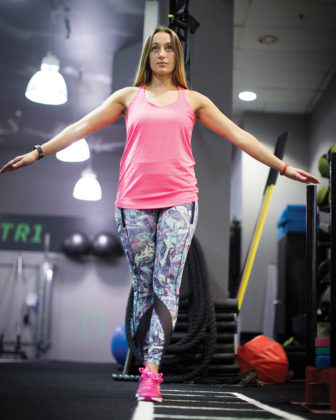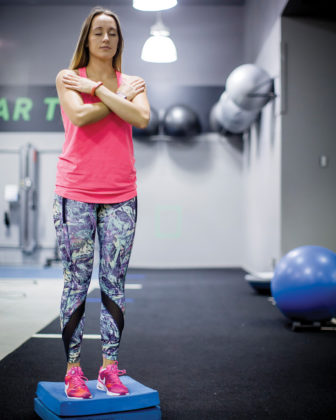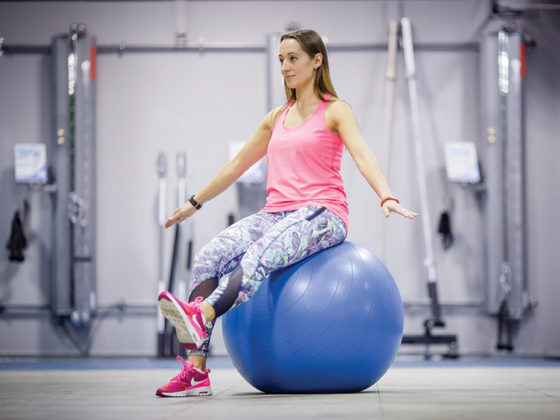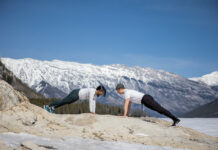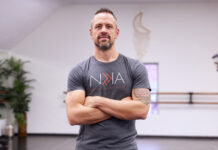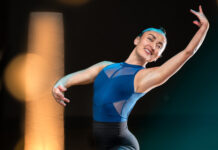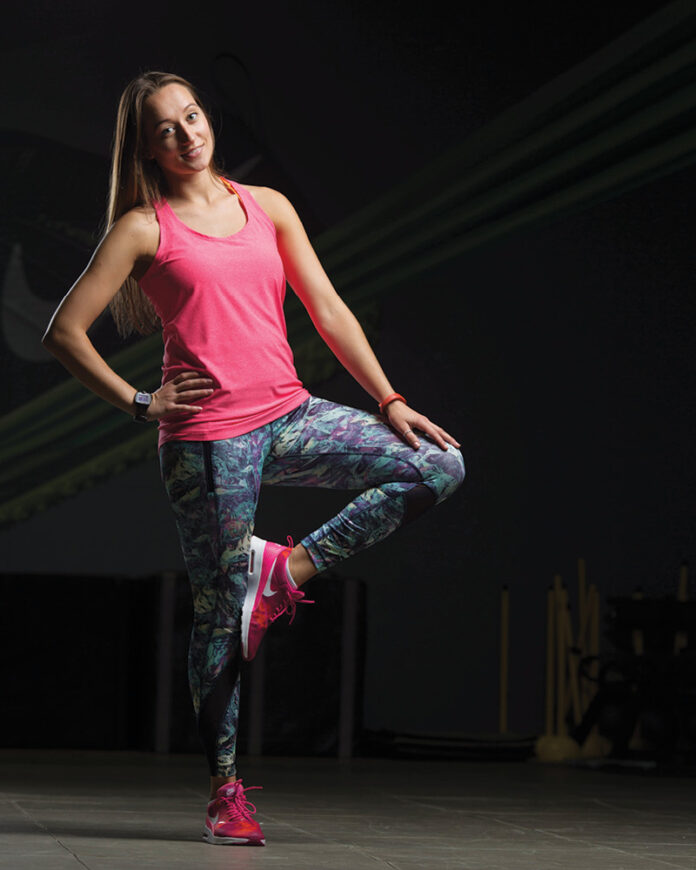
Balance is the ability to control your body and its centre of gravity during movement. It is key to performing everyday functional movements, making sure we stay safe by preventing falls and maximizing our sport performance.
As a personal trainer I see clients who want to be healthy, lose weight and stay motivated. Almost 70 per cent of my clients also need to improve their balance.
During the preliminary fitness assessment in our gym, we conduct a Fullerton Advanced Balance Scale (FABS) test. This includes 10 ways to test your sensory input, functional and dynamic balance and can determine impairment which in turn, allows the trainer to recommend corrective exercises. You can get right into improving your balance with this workout or you can do a self-assessment with the FABS chart here.
Warm Up
5 minutes on a treadmill or elliptical followed by a dynamic warm-up: leg swings, knee-ups, and kneeling lunge with reach.
After warm up, take a Mini Balance Test:
- Tandem walk 10 steps.
- 20 sec standing on foam cushion with eyes closed (arms crossed at your chest and back straight, feet shoulder with apart).
- 20 seconds seated ball leg lift (sit on fitball, raise one leg to be parallel with the floor and hold while keeping a natural posture).
Workout
These balance training exercises can help slow our natural digression of balance and help you maintain an independent lifestyle by improving the four major issues with balance:
- Increasing cognitive control;
- Improving lower body range of motion;
- Strengthening lower body muscles;
- Increasing core stability.
Do 3 sets of 10 reps for each exercise.
1. BOSU Squats
Targeting all major lower body muscles and core. Control the centre of gravity while moving. Beginners use handrail to increase stability, advanced participants hold a weighted medicine ball.
- Stand on the black side of the BOSU, feet slightly wider than shoulder width.
- Keep knees bent and pushing away from each other.
- With your arms straight in front of you, start flexing your hips and then knees.
- Keep flexing until you can no longer maintain a neutral lumbar spine.
- Lean your torso slightly forward.
- Once at bottom position, hold for 2 seconds and come back. Listen to your body and find a speed you are comfortable with.
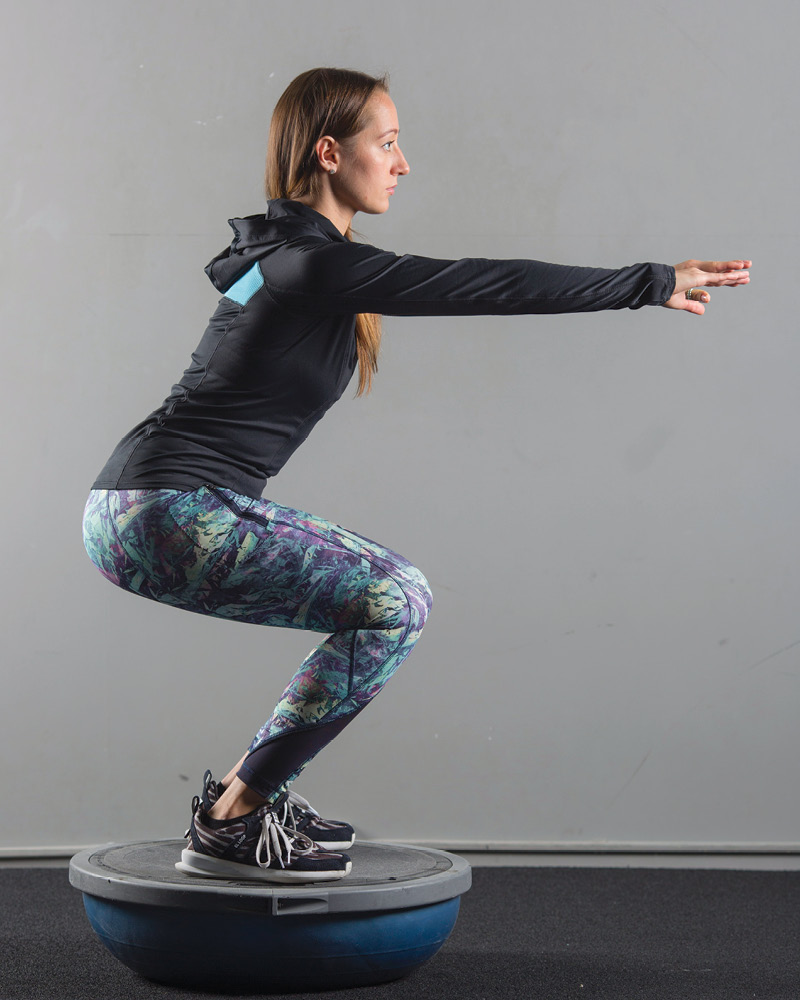
2. Bird-dog with Block
Placing a block on top of your back will help keep correct form and control centre of gravity. Advanced participants maintain plank position during the movement.
- Kneel on the mat with hands under shoulders and knees under hips.
- Keep head, neck and back aligned with a block on the middle of your back.
- Lift your right arm and left leg up until it is in line with torso. Keep your glutes squeezed tight and abdominal muscles contracted. Hold for 2 seconds.
- Slowly return to the initial position and repeat with the opposite side.
- Keep the block from moving or falling.
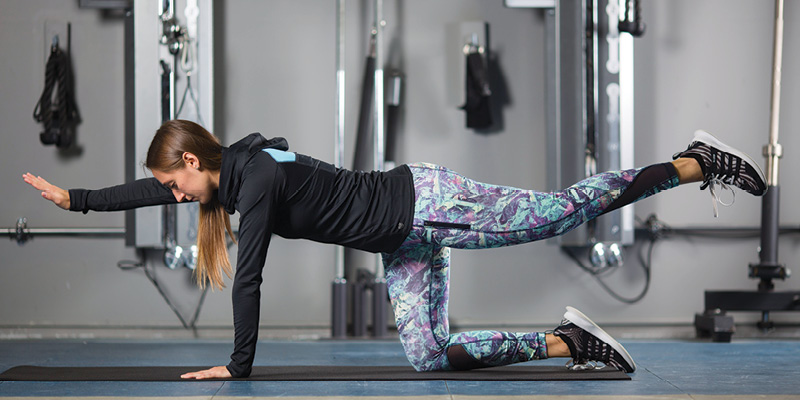
3. Stability Ball Russian Twist
Builds strength and stability for core. Beginners have someone stabilize/hold the ball, advanced participants hold dumbbell or medicine ball.
- Lie on a stability ball so head, neck and upper back are in contact with the ball.
- Flex your knees at 90 degrees, feet flat on the ground, slightly wider than shoulder width.
- Hold your arms straight and fully extended in front of your chest with palms together
- Keep abdominals and glutes contracted.
- Rotate trunk rolling on to one side engaging oblique muscles, while minimizing movement in the hips.
- Arms straight and hips up. The degree of rotation will depend on your flexibility.
- Repeat on the opposite side.
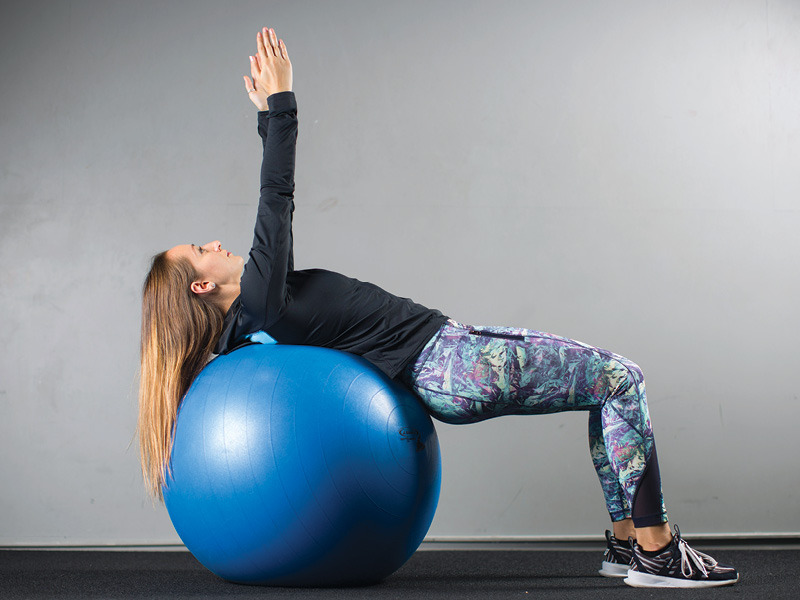
4. Single Leg Deadlifts
Works hamstrings, glutes and core. Challenges balance by utilizing only one leg and increases range of motion at hips. Beginners use one dumbbell and hold wall as support, advanced participants use foam cushion or BOSU.
- Stand tall with your feet together, holding a dumbbell in each hand.
- Place hands in front of your thighs. Keep your knees slightly bent, chest up and core tight.
- Flex forward at hips while lifting one leg up. Stomach pulled in, shoulders back, neck aligned with leg.
- Flex at hips until your upper body is parallel with the ground.
- Do not allow your hips to twist and keep your raising leg straight.
- Repeat with opposite leg.


